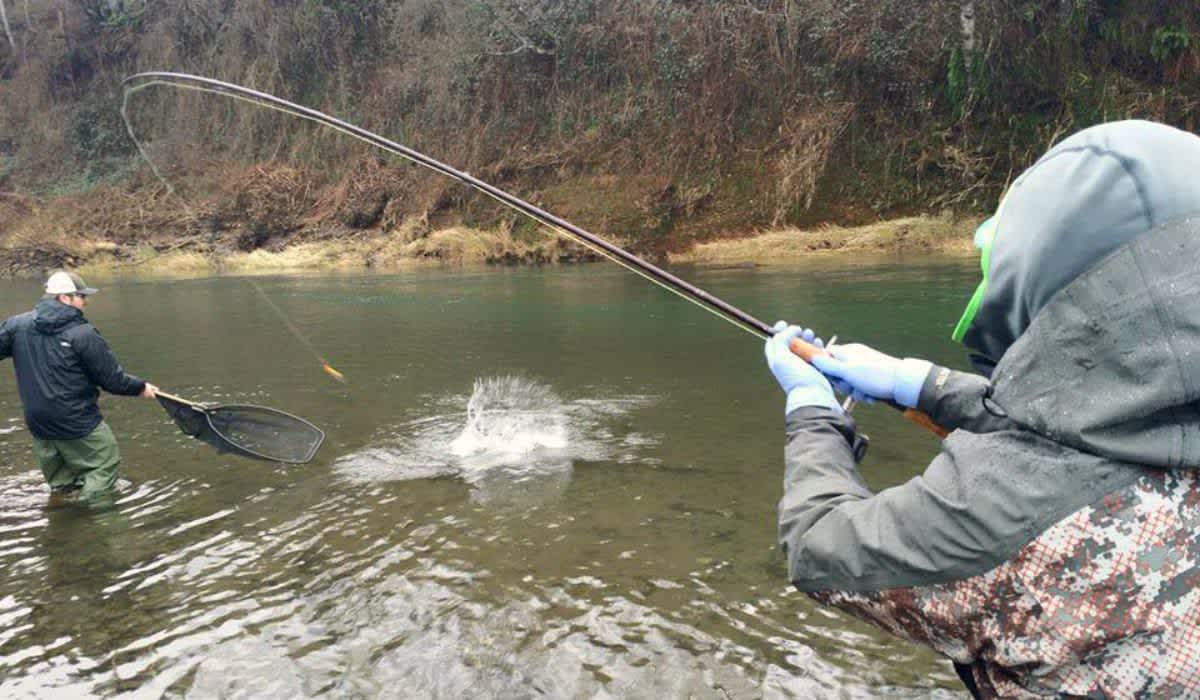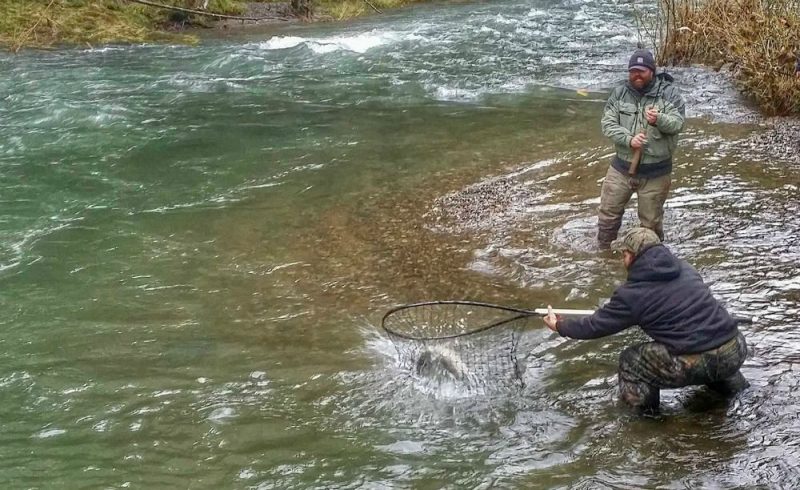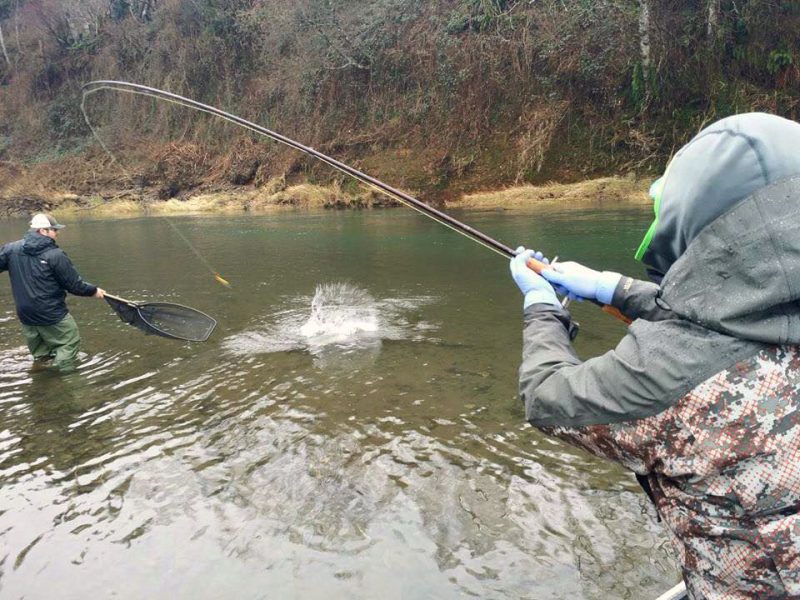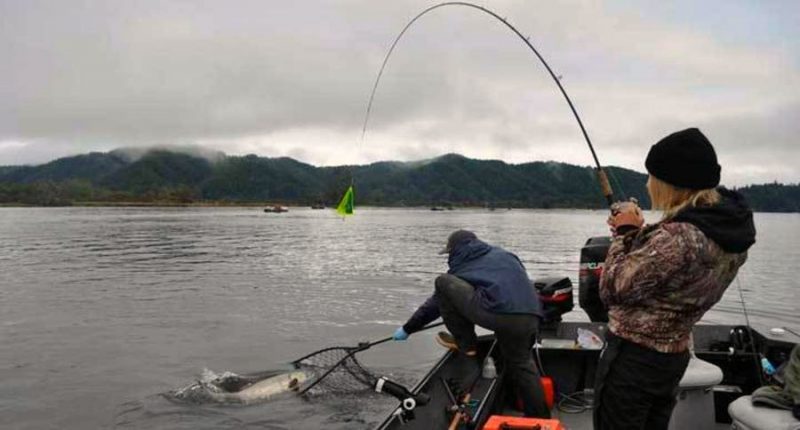4 Rules for Being a Good Net Man
Randall Bonner 02.05.18

Being a good net man is like being a good wingman. Sure, you’d rather be the guy reeling one in, but if your buddy has one on the line, you want to help him land it. Being a net man seems like a simple task; it’s much easier to get a fish into a big hoop than trying to fool one into biting, right? Not necessarily. For the net man, there’s always that anxiety in the back of your mind that you could make one wrong move and blow it, then become the scapegoat instead of the hero.
To net a fish, you must think like a fish. By that I mean, you have to predict the behavior of an unpredictable wild animal. There is a formula of deductive reasoning and rational thinking that can increase the probability of netting a fish. A lot of the variables are based upon the conditions and surrounding environment.
For example, if a fish has depth, it will likely dive; if it’s in shallow water, it’s more likely to jump, so on and so forth. For each situation, net placement is crucial to being in the right place at the right time to capture a fish during the fight.
The four guidelines below generally apply to salmon and steelhead, but are useful in netting all species.
1. Work as a Team
Keep in mind that the angler battling the fish should be attempting to get control over the fish, or at least tire it out until it gives in a little easier. As the angler, there are a few things you should attempt to do in order to keep the fish in a good position for it to end up in the net.
After the initial freak-out of the fish, you ideally want to be able to pull it upstream (when fishing in current) with the net man positioned below you. Once you’ve got the fish pulled upstream and pinned by pointing the rod tip at an upstream angle, then transition to a downstream angle in order to turn the fish. Make sure you’re communicating this strategy with your net man ahead of time.
When you turn the fish, it should swim right toward the net man and (hopefully) into the net. The net man should pursue a position, not the fish itself. The angler should lead the fish right to the net when it’s tired out.

If the angler fighting the fish is having a difficult time getting it near you (the net man), communicate this strategy and place yourself downstream.
2. Don’t Spook the Fish
As the net man, you want to do your best to be stealthy with your approach. If you thrash around in the water when your buddy has a fish pinned, it’s going to panic. Try to sneak into position and take your time instead of rushing to net the fish before it gets away.
Imitate the natural environment and pretend you’re a tree, holding a net. Be still, and keep the net out of the water until the time is right. This also means having the patience not to take stab at the fish if you’re unsure you’re in a good position or close enough to bag it.
If you miss, the impending panic could be the end of the fight, be it a broken line, pulling out the hook, or straightening it. If you get the hook tangled in the net but don’t bag the fish, you could easily pull it out of the fish’s mouth. You could also bang the line with the net hoop and break the line or pull out the hook as well.
Much like hunting, you ideally want to go for the one-shot, one-kill scenario.

3. Head First
Predict the direction the fish will be facing when you go for the scoop. As simple as it may sound, you want to trick the fish into the net, not stab at it, or hammer down on it. Even if you must scoop, you want to be in front of the direction the fish is swimming so that you have a little more room for error if it decides it wants to split and bail at the last moment.
If you’re swiping at the tail, the fish is already in position to swim away from the net without having to turn around. Consider the body shape of the fish, and that most of its heavy mass is in the head and “shoulders,” while its shape tapers toward the tail. Consider that a dead fish laying on the pavement would be easier to scoop from the head to tail than the other way around. It’s no different with a living, breathing fish.

4. Adapt on the Fly
You can try your best and draw from experience what behaviors the fish are likely to do in certain situations, but they are only as predictable as Northwestern weather. Sometimes a fish will refuse to swim upstream, even if it’s tired out. In fact, if there’s swift current and you’re keeping them pinned so they can’t turn and burn, some fish will open their mouths wide and create resistance that puts a lot of pressure on the line, swimming from side to side in the river like a 30-inch-long plug. This is one situation where a tail-first scoop is justified. If the line breaks, then the fish will likely still be facing upstream, but let the current carry it downstream, especially if it can’t see behind and doesn’t know you’re there waiting.
Keep in mind that over time, nets can grow big holes that lose fish. Stay on top of frays, and repair holes with heavy braid. If you’re keeping the fish, try to bonk it in the net without damaging the mesh. Be aware of hooks and line, and don’t hook yourself while handling the fish. Nets with rubber-coated knot-free mesh protect the slime layer on fish, and they also reduce the tangling associated with hooks; consider these top-notch nets when catch-and-release is the priority.
The moments leading up to the landing can have emotions running high if the chemistry between angler and net man aren’t in sync. Try to remember you’re on the same team, put trust and faith in your fishing partner, and share gratitude and congratulations when everything comes together.


